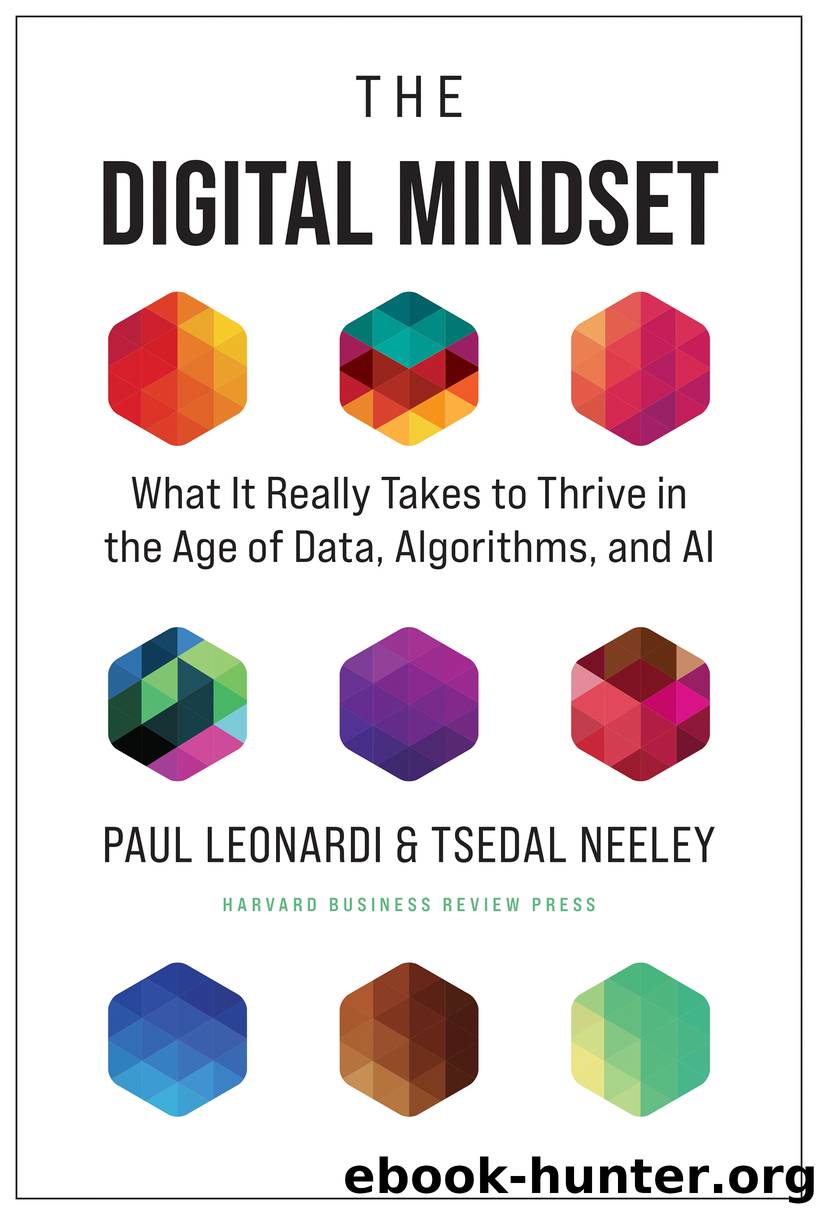The Digital Mindset by Paul Leonardi

Author:Paul Leonardi
Language: eng
Format: epub
Publisher: Harvard Business Review Press
Published: 2022-05-10T00:00:00+00:00
Assure Data Integrity through Blockchain
The global diamond market is valued at more than $90 billion a year. Experts estimate that each year up to 15 percent of that valueâ$13.5 billionâis lost to fraud. Itâs not difficult to understand how. Between fifteen and twenty intermediaries touch a diamond between the time it is extracted from the earth to when it is purchased by a consumer. With so many handoffs and transactions, itâs easy for diamonds to disappear, get swapped, or misclassified. Prior to the year 2000, about a quarter of all diamonds were traded illegally. Until the United Nations set up the Kimberley Process in 2003 to ensure that âdiamond purchases were not financing violence by rebel movements and their allies seeking to undermine legitimate governments,â a diamondâs path from mine to retail store was not closely tracked.21 Although eighty-one countries have signed on to the Kimberley Process, it has not worked well, because tracking is difficult, since certification is done via digital ledgers that are shipped around the world. Although a good gemologist can discern a raw diamondâs provenance and quality, as diamonds move up the value chain and become more refined, it becomes difficult for even the most seasoned professionals to determine if the diamond mined from its place of origin is the same diamond that is being presented to consumers. As Wuyi Wang, director of research and development at the Gemological Institute of America, observes, âDespite the concern from the public and within the industry ⦠there is no scientific or technical way to tell where diamonds came from once they are cut.â22
The diamond supply chain serves as an apt metaphor for the importance of data integrity. Without data integrity, too many things can go wrong when multiple people act on and manipulate data concerning an agreement, relationship, or asset without other people knowing what is being done. Data integrity is a global problem that affects a wide range of industries, such as luxury goods, clothing, food products, pharmaceuticals, and more. Proving or disproving the authenticity and quality of an asset can be a challenge because traditional supply chains are long, complex, and lack transparency.
This is where blockchain comes in as a potential solution to this age-old, stubborn problem.
A company called Everledger works with the major diamond certification houses in the United States, Israel, India, and Belgium that grade and certify each diamond for the market.23 Everledger takes this data and creates a digital âDNAâ record comprising the 4Cs (color, cut, clarity, and carat weight), fourteen other metadata reference points, and a unique identification code for each stone. With this information, Everledger knows who owns which diamond and where it is. It can even trace each diamond as it moves into retail stores and onto ecommerce platforms. In short, it ensures that the data about a diamond are kept secure so that no diamond fraud can occur. A digital mindset means that, in addition to security and privacy, you must also focus on data integrity. To help keep
Download
This site does not store any files on its server. We only index and link to content provided by other sites. Please contact the content providers to delete copyright contents if any and email us, we'll remove relevant links or contents immediately.
Harry Potter and the Goblet Of Fire by J.K. Rowling(3027)
Never by Ken Follett(2873)
Shadow of Night by Deborah Harkness(2710)
Ogilvy on Advertising by David Ogilvy(2678)
Zero to IPO: Over $1 Trillion of Actionable Advice from the World's Most Successful Entrepreneurs by Frederic Kerrest(2377)
The Man Who Died Twice by Richard Osman(2291)
Machine Learning at Scale with H2O by Gregory Keys | David Whiting(2269)
Book of Life by Deborah Harkness(2259)
How Proust Can Change Your Life by Alain De Botton(2256)
My Brilliant Friend by Elena Ferrante(2219)
0041152001443424520 .pdf by Unknown(2214)
The Tipping Point by Malcolm Gladwell(2202)
How to Pay Zero Taxes, 2018 by Jeff A. Schnepper(2095)
Will by Will Smith(2033)
Purple Hibiscus by Chimamanda Ngozi Adichie(1979)
Hooked: A Dark, Contemporary Romance (Never After Series) by Emily McIntire(1935)
Borders by unknow(1780)
Rationality by Steven Pinker(1761)
Daughter of Smoke and Bone by Laini Taylor(1739)
